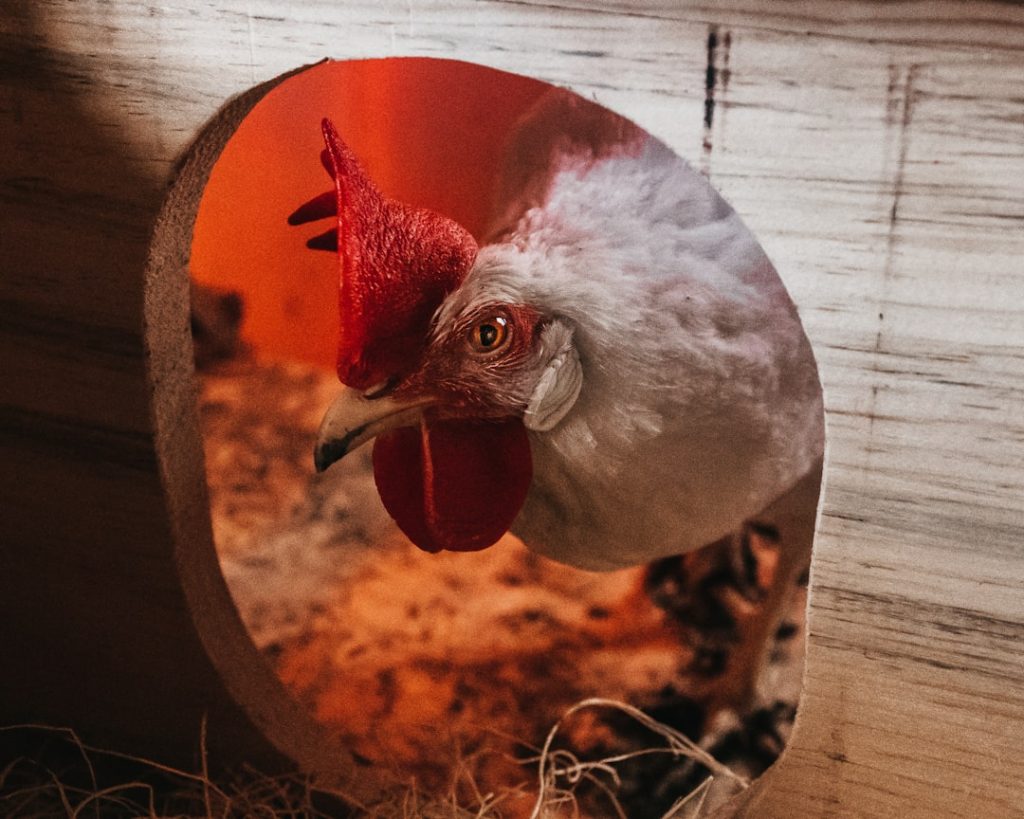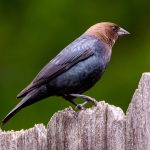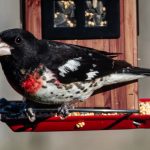Chickens are naturally inquisitive and active birds that enjoy exploring their environment, scratching the ground for sustenance, and engaging in short flights to evade predators. Comprehending their innate behaviors is essential for creating an appropriate habitat. As social creatures, chickens flourish in the company of their own kind, establishing a hierarchical structure within their group.
Adequate space is necessary to allow for this social organization without overcrowding. Chickens possess a natural inclination to roost at night, making it crucial to provide perches within their coop. Being prey animals, they have a strong instinct to flee from perceived threats, which may result in attempts to fly over fences or escape their enclosure when feeling endangered.
Foraging is a significant aspect of chicken behavior. Offering access to a diverse diet and opportunities to peck and scratch for insects and plants is vital for their mental and physical well-being. Chickens are creatures of habit, thriving on routine and potentially experiencing stress when their environment or daily patterns are disrupted.
By understanding these natural behaviors, chicken keepers can design an environment that caters to their flock’s needs, thereby reducing stress and promoting overall health and welfare.
Table of Contents
- 1 Clipping the wings of your chickens
- 2 Providing sufficient space and entertainment for your chickens
- 3 Building a secure coop and run
- 4 Training your chickens to stay
- 5 Using deterrents to discourage flying
- 6 Regularly checking for potential escape routes
- 7 FAQs
- 7.1 What are some methods to keep chickens from flying away?
- 7.2 Is it safe to clip a chicken’s flight feathers?
- 7.3 What are the benefits of providing a covered run for chickens?
- 7.4 How can netting or fencing be used to prevent chickens from flying away?
- 7.5 Are there any other methods to keep chickens from flying away?
Key Takeaways
- Chickens are social animals that have natural behaviors such as scratching, dust bathing, and roosting.
- Clipping the wings of chickens can prevent them from flying over fences and escaping.
- Providing sufficient space, perches, and entertainment such as hanging treats can keep chickens happy and prevent them from trying to escape.
- Building a secure coop and run with proper fencing and predator-proofing is essential to keep chickens safe and contained.
- Training chickens to stay by using treats and positive reinforcement can help them learn to stay within their designated area.
Clipping the wings of your chickens
Understanding the Purpose and Procedure of Wing Clipping
Wing clipping is a common practice among chicken owners to prevent their birds from flying over fences or escaping from their enclosure. This simple and painless procedure involves trimming the primary feathers on one wing, which disrupts the bird’s balance and prevents it from achieving lift during flight. Rest assured that wing clipping does not harm the chicken or prevent it from engaging in normal activities such as walking, perching, or dust bathing.
Best Practices for Clipping Chicken Wings
When clipping a chicken’s wings, it’s crucial to use sharp, clean scissors and to only trim the primary feathers, leaving the secondary feathers intact. This allows the chicken to maintain its ability to glide and slow its descent if it jumps or falls from a height. It’s important to clip both wings to maintain balance and prevent injury.
Important Considerations and Precautions
Wing clipping should be done carefully and with caution to avoid cutting into the blood feathers, which can cause bleeding and discomfort for the chicken. It’s also important to note that wing clipping is not a permanent solution, as the feathers will eventually molt and grow back. Regular maintenance may be required to keep the chicken from regaining its ability to fly.
Combining Wing Clipping with Secure Enclosures for Optimal Safety
While wing clipping can be an effective method for preventing chickens from flying, it’s important to provide a secure enclosure and monitor for any potential escape routes to ensure the safety of the flock. By combining wing clipping with a secure and well-maintained enclosure, you can keep your chickens safe and happy.
Providing sufficient space and entertainment for your chickens

Providing sufficient space and entertainment for chickens is essential for their physical and mental well-being. Chickens are active animals that require space to move around, stretch their wings, and engage in natural behaviors such as scratching, pecking, and dust bathing. Overcrowding can lead to stress, aggression, and health issues within the flock.
The general rule of thumb is to provide at least 2-3 square feet of space per chicken inside the coop and 8-10 square feet per chicken in an outdoor run. This allows them to move around freely and establish their pecking order without feeling cramped or confined. In addition to space, providing entertainment for chickens is important for keeping them mentally stimulated and preventing boredom.
Boredom can lead to destructive behaviors such as feather picking and aggression within the flock. Providing entertainment can be as simple as hanging a cabbage or other vegetables from a string for them to peck at, scattering scratch grains or mealworms for them to forage, or providing them with objects such as mirrors or perches to explore and interact with. Providing a variety of perches at different heights can also encourage natural roosting behaviors and give chickens a sense of security within their environment.
It’s important to regularly rotate and introduce new forms of entertainment to keep chickens engaged and prevent them from becoming bored with their surroundings. By providing sufficient space and entertainment, chicken owners can ensure the physical and mental well-being of their flock, leading to healthier, happier chickens.
Building a secure coop and run
Building a secure coop and run is essential for keeping chickens safe from predators and preventing them from escaping. The coop should be constructed with sturdy materials such as wood or metal and should have a solid roof to protect the chickens from the elements and potential predators such as hawks or owls. The coop should also have secure doors with latches to prevent predators from gaining access to the flock at night when they are most vulnerable.
The run should be enclosed with wire mesh that extends underground to prevent predators from digging underneath and gaining access to the flock. It’s important to regularly inspect the coop and run for any signs of wear or damage that could compromise its security. Additionally, providing shade, shelter, and access to fresh water within the run is important for the well-being of the flock.
When building a secure coop and run, it’s important to consider the specific predators in your area and take measures to deter them from targeting your chickens. This may include installing motion-activated lights or sound devices, using predator-proof latches on doors, or even employing guard animals such as dogs or geese to protect the flock. By building a secure coop and run, chicken owners can provide a safe environment for their flock, reducing the risk of predation and escape.
Training your chickens to stay
Training chickens to stay within their designated area can be achieved through positive reinforcement and consistency. Chickens are intelligent animals that can be trained using treats as rewards for desired behaviors. By consistently rewarding chickens for staying within their designated area, they can learn to associate staying put with receiving a reward.
One method of training chickens to stay is by using a designated feeding area within the run or coop. By consistently feeding them in the same location at the same time each day, they will learn that this is where they receive their food and will be more likely to stay in that area. Another method is using a verbal cue such as “stay” or “come” while offering treats as a reward when they comply with the command.
Consistency is key when training chickens, as they thrive on routine and repetition. By consistently rewarding desired behaviors and redirecting unwanted behaviors, chickens can learn to stay within their designated area without the need for physical barriers or restraints.
Using deterrents to discourage flying

Physical Barriers
One common deterrent is installing netting or wire mesh over the top of the run. This method prevents chickens from gaining enough height to fly over the fence, ensuring they stay safe and secure within their enclosure.
Visual Deterrents
Another effective deterrent is using visual barriers such as flags or streamers along the top of the fence line. The movement of these visual barriers startles chickens, discouraging them from attempting to fly over the fence. Additionally, planting tall shrubs or trees along the perimeter of the run creates a natural barrier that prevents chickens from gaining enough height to fly over.
Combining Deterrents for Maximum Effect
Using deterrents in combination with other methods, such as wing clipping or training, is an effective way to prevent chickens from flying over fences or escaping from their enclosure. By employing a variety of deterrents, chicken owners can create a secure environment for their flock while still allowing them access to outdoor space.
Regularly checking for potential escape routes
Regularly checking for potential escape routes is crucial for preventing chickens from escaping from their enclosure. This includes inspecting the perimeter of the run for any signs of wear or damage that could compromise its security, such as holes in the wire mesh or gaps underneath the fence line. It’s important to promptly repair any damage found during these inspections to prevent potential escape routes from being exploited by predators or curious chickens.
In addition to inspecting the physical barriers of the enclosure, it’s important to monitor for any changes in behavior that could indicate an attempt at escape, such as pacing along the fence line or attempting to fly over the fence. By regularly monitoring for potential escape routes and addressing any issues promptly, chicken owners can maintain a secure environment for their flock. Regular inspections also provide an opportunity to assess the overall well-being of the flock and make any necessary adjustments to their environment based on their behavior and needs.
By regularly checking for potential escape routes, chicken owners can ensure the safety and security of their flock while providing them with a suitable environment that meets their natural behaviors and needs. In conclusion, understanding the natural behavior of chickens is essential for providing them with a suitable environment that meets their physical and mental needs. Clipping the wings of chickens can be an effective method for preventing them from flying over fences or escaping from their enclosure when combined with other measures such as providing sufficient space and entertainment, building a secure coop and run, training them to stay, using deterrents, and regularly checking for potential escape routes.
By taking these measures, chicken owners can create a safe and secure environment for their flock while allowing them access to outdoor space and promoting their overall health and well-being.
If you’re looking for more information on keeping chickens, you might be interested in this article on whether guinea fowl can live with chickens. It’s important to consider the compatibility of different poultry species when planning your coop.
FAQs
What are some methods to keep chickens from flying away?
Some methods to keep chickens from flying away include clipping their flight feathers, providing a covered run, and using netting or fencing to prevent them from flying over barriers.
Is it safe to clip a chicken’s flight feathers?
Yes, it is safe to clip a chicken’s flight feathers if done properly. It is a painless procedure that involves trimming the primary feathers on one wing to prevent the chicken from achieving lift.
What are the benefits of providing a covered run for chickens?
Providing a covered run for chickens helps to keep them contained and protected from predators, while still allowing them to have access to fresh air and natural light.
How can netting or fencing be used to prevent chickens from flying away?
Netting or fencing can be used to create a barrier that prevents chickens from flying over and escaping. It is important to ensure that the netting or fencing is secure and tall enough to deter the chickens from attempting to fly over it.
Are there any other methods to keep chickens from flying away?
Other methods to keep chickens from flying away include providing plenty of space and enrichment in their coop and run, as well as training them to return to their coop at night. Regularly checking for any potential escape routes and addressing them promptly can also help prevent chickens from flying away.
Meet Walter, the feathered-friend fanatic of Florida! Nestled in the sunshine state, Walter struts through life with his feathered companions, clucking his way to happiness. With a coop that’s fancier than a five-star hotel, he’s the Don Juan of the chicken world. When he’s not teaching his hens to do the cha-cha, you’ll find him in a heated debate with his prized rooster, Sir Clucks-a-Lot. Walter’s poultry passion is no yolk; he’s the sunny-side-up guy you never knew you needed in your flock of friends!







